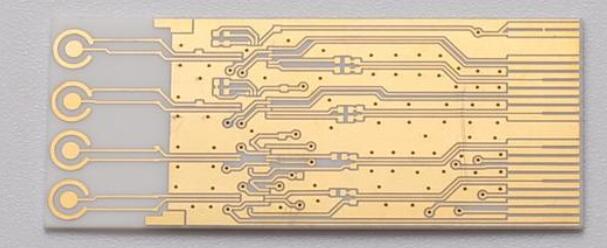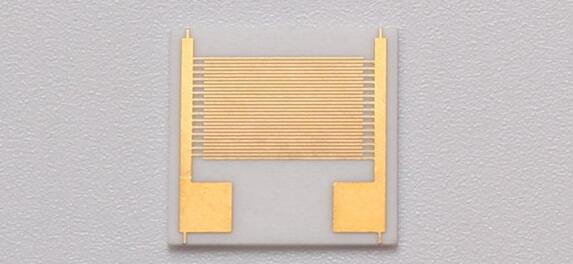Ceramic PCBs are also called ceramic substrates. They refer to the circuit boards with multiple layers of wired or metalized ceramic boards on one side, which have heat conduction, high air tightness, high insulation, and good electrical performance. With the development of electronic technology and the development of intellectualization, integration, and miniaturization, there are better requirements for the production process of ceramic printed circuit boards. Which processes are used to make ceramic printed circuit boards?

1. High Precision Ceramic Circuit Board Using DPC Process
High precision, high integration, and high ceramics circuit board, mostly using DPC film technology, this process can achieve precise lines, line width and line spacing can be 0.05mm or even smaller, and can be used as welding pads, electrodes, gold wires and so on. DPC thin film ceramic circuit board, generally the metal layer is thin, also easy to make precise wiring and other production requirements.
2. DBC or AMB process is mostly used for high thermal conductivity and high insulation base plates.
Copper is often made into copper-clad sheets with thicker copper layers, which require a higher metal binding force. If the metal binding force is more demanding, the AMB process is used, usually aluminum nitride ceramics or silicon nitride ceramics as AMB ceramic clad. AMB ceramic copper clad metal has a strong binding force, and below 800um can be achieved by the AMB fabrication process.
Third, the complex process requires HTCC high-temperature co-burning process or LTCC low-temperature co-burning process for multi-layer interconnection.
For example, when high-frequency ceramic circuit boards are used in high-power devices, LTCC low-temperature co-burning process is mostly used, and LTCC low-temperature co-burning process can achieve complex requirements for passive device integration of semiconductor devices. LTCC is more suitable for high-frequency communication.

If it is HTCC high-temperature co-burning and LTCC low-temperature co-burning difference:
Both HTCC and LTCC have a high print allocation ratio for one-off burning, controllable dielectric layer thickness, smooth surface, and an unlimited number of layers.
High-temperature co-fired ceramic materials are mainly alumina, mullite, and aluminum nitride as the main components of ceramics, HTCC ceramic powder is not added with glass material. Conductor slurry is made of tungsten, molybdenum, molybdenum, manganese, and other high melting point metal thermoelectric resistance slurry. The sintering temperature ranges from 900 to 1000 degrees. Because of the high burning temperature, HTCC can not use low melting point metal materials such as gold, silver, copper, etc. It must use refractory metal materials such as tungsten, molybdenum, manganese, etc. These materials have low conductivity and will cause defects such as signal delay, so they are not suitable for the baseboard of high-speed or high-frequency micro-assembly circuits. However, due to the advantages of high structure strength, high thermal conductivity, good chemical stability, and high wiring density, HTCC substrates have wide application prospects in high-power micro-assembly circuits.
HTCC High-Temperature Co-fired Ceramic PCB
In order to ensure high sintering density at low temperature, amorphous glass, crystallized glass, and low melting point oxide are usually added to the components to promote sintering. Glass and ceramic composite is a typical low temperature co-fired ceramic material. In addition, there are crystallized glass, a composite of crystallized glass and ceramics, and liquid sintered ceramics. The metals used are highly conductive materials (Ag, Cu, Au, and their alloys, such as Ag-Pd, Ag-Pt, Au-Pt, etc.). The sintering temperature ranges from 1600 to 1800 degrees. LTCC uses Au, Ag, Cu, and other metals with high conductivity and low melting points as conductor materials. Due to the low dielectric constant of glass ceramics and the low loss performance at high frequencies, LTCC is very suitable for applications in RF, microwave, and millimeter wave devices. Mainly used in high-frequency wireless communication, aerospace, memory, drivers, filters, sensors, automotive electronics, and other fields.
The above is an overview of the ceramic circuit board described by the iPCB and the different industry requirements for the production of ceramic circuit boards. Specifically, to develop and make ceramic circuit boards, enterprises and research and development institutions also need to select the appropriate board and production process to make ceramic circuit boards according to the requirements of the product application environment.